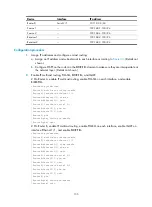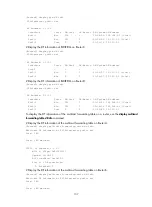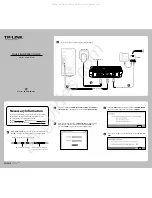
116
path of the packet that the RPF interface receives from the RPF neighbor as the shortest path that
leads back to the source.
{
The router searches its MBGP routing table by using the IP address of the packet source as the
destination address and automatically chooses an optimal MBGP route. The outgoing interface
of the route is the RPF interface and the next hop is the RPF neighbor.
{
The router searches its static multicast routing table by using the IP address of the packet source
as the source address and automatically chooses an optimal static multicast route. The route
explicitly defines the RPF interface and the RPF neighbor.
2.
The router selects one of the optimal routes as the RPF route according to the following principles:
{
If the router uses the longest prefix match principle, it selects the longest matching route as the
RPF route. If the routes have the same mask, the router selects the route that has the highest
priority as the RPF route. If the routes have the same priority, the router selects a route as the RPF
route in the order of static multicast route, MBGP route, and unicast route.
{
If the router does not use the longest prefix match principle, it selects the route that has the
highest priority as the RPF route. If the routes have the same priority, the router selects a route as
the RPF route in the order of static multicast route, MBGP route, and unicast route.
The term "packet source" means different things in different situations:
•
For a packet traveling along the SPT from the multicast source to the receivers or the RP, the packet
source for RPF check is the multicast source.
•
For a packet traveling along the RPT from the RP to the receivers, or along the source-side RPT from
the multicast source to the RP, the packet source for RPF check is the RP.
•
For a bootstrap message from the BSR, the packet source for RPF check is the BSR.
For more information about the concepts of SPT, RPT, source-side RPT, RP, and BSR, see "Configuring
PIM." For more information about multicast across VPNs, see "Configuring multicast VPN."
RPF check implementation in multicast
Implementing an RPF check on each received multicast packet would bring a big burden to the router.
The use of a multicast forwarding table is the solution to this issue. When the router creates a multicast
routing entry and a multicast forwarding entry for a multicast packet, it sets the RPF interface of the packet
as the incoming interface of the forwarding entry. After the router receives a multicast packet, it searches
its multicast forwarding table:
•
If no forwarding entry matches the packet, the packet undergoes an RPF check. The router creates
a multicast routing entry with the RPF interface as the incoming interface and adds the entry into the
multicast forwarding table.
{
If the interface that received the packet is the RPF interface, the RPF check succeeds and the
router forwards the packet out of all the outgoing interfaces.
{
If the interface that received the packet is not the RPF interface, the RPF check fails and the router
discards the packet.
•
If a forwarding entry matches the packet and the interface that received the packet is the incoming
interface of the forwarding entry, the router forwards the packet out of all outgoing interfaces.
•
If a forwarding entry matches the packet but the interface that received the packet is not the
incoming interface of the forwarding entry, the multicast packet undergoes an RPF check.
{
If the RPF interface is the incoming interface, it means that the forwarding entry is correct but the
packet traveled along a wrong path. The router discards the packet.
{
If the RPF interface is not the incoming interface, it means that the forwarding entry has expired,
and the router replaces the incoming interface with the RPF interface. If the interface that
















































